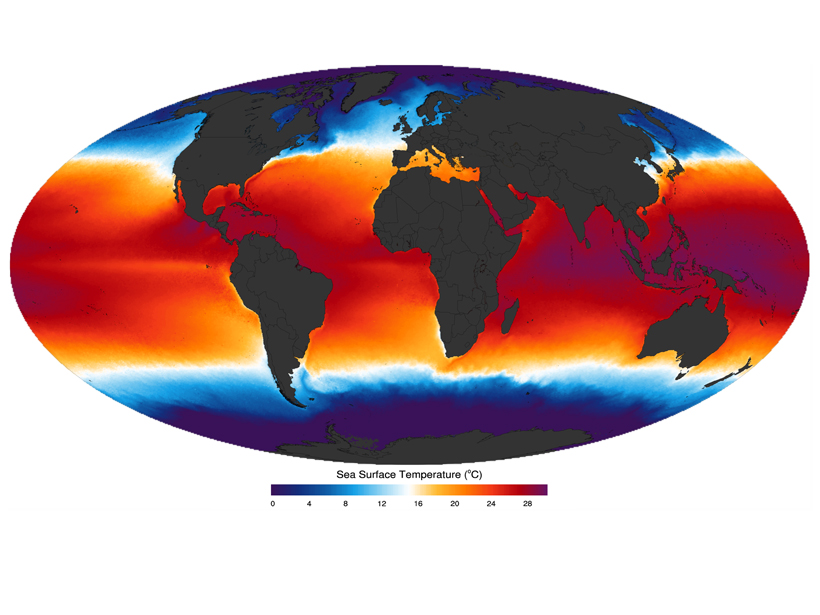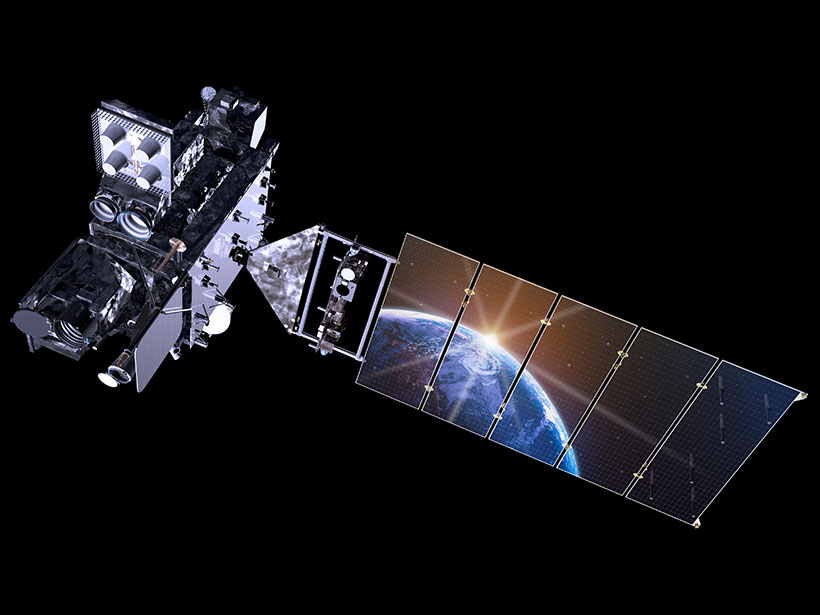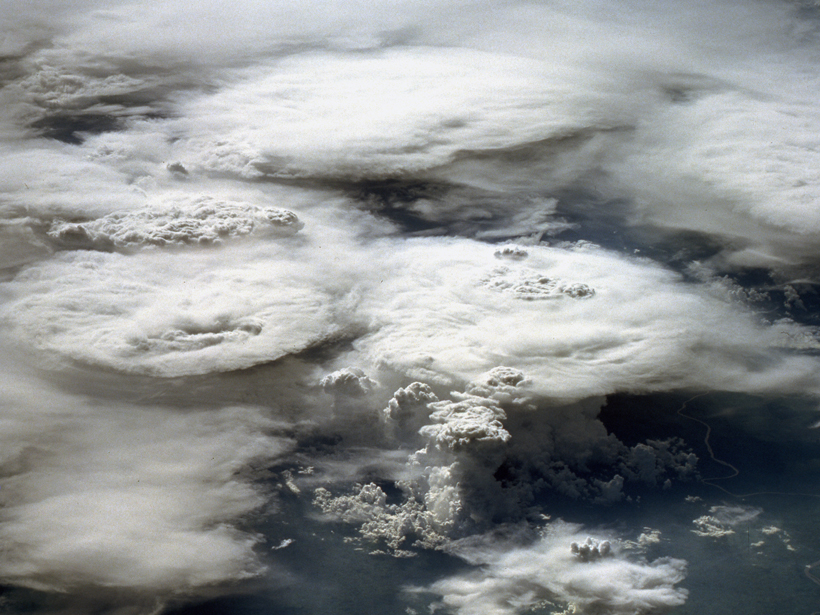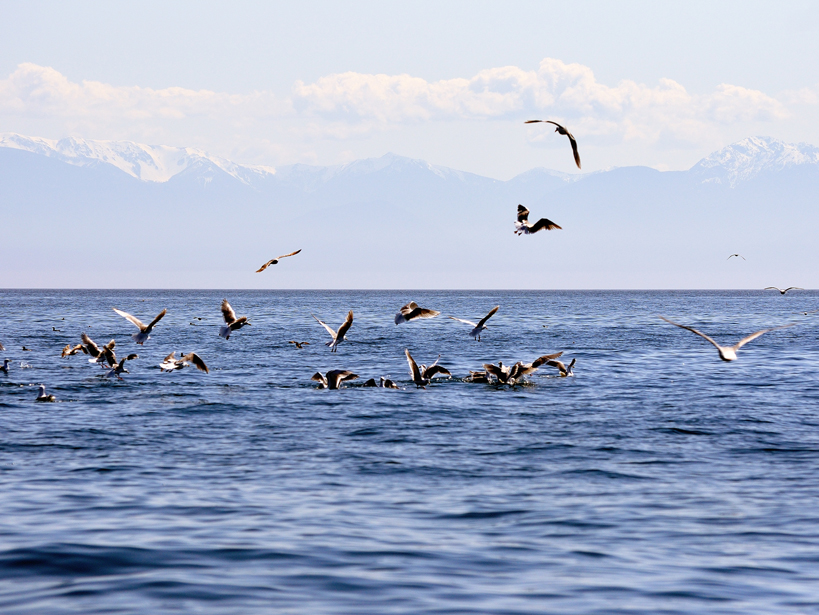The key to better predictions of atmospheric temperature trends in the tropics may lie in more accurate measurements of sea surface temperatures.
E. Betz
Do All These Weather Satellites Really Improve Forecasts?
A team of researchers put an array of space- and ground-based weather instruments to the test and found that the common weather balloon is irreplaceable for forecasting rainfall.
Researchers Roll Clouds into Climate Modeling
As computational power grows thanks to improving techniques and technology, scientists are working toward incorporating complex systems such as clouds into global and regional climate models.
Scientists Watch Solar Winds Blast Mercury's Magnetic Field
A NASA team used the MESSENGER spacecraft to analyze Mercury's magnetosphere during intense solar wind pressure.
Glacial Debris Hints at Ancient Climate Change
Interspersed layers of debris in some of Antarctica's glaciers give clues to ancient swings in climate.
Gravity Waves Drive Global Changes in Earth's Upper Atmosphere
Deep convective objects such as the plumes in thunderstorms can trigger gravity waves, which disturb the wind and temperatures hundreds of kilometers above Earth's surface.
Shooting Stars and Cosmic Dust Help Form Clouds, Fertilize Plankton
Tons of cosmic dust enter Earth’s atmosphere each day, triggering a range of phenomena that scientists are only just beginning to understand.
Salish Sea a Key Source of Regional Marine Nutrients
A new examination of nitrogen in the coastal waters off the Pacific Northwest shows that the Salish Sea delivers a large fraction of nutrients to shelf waters.
"Knobby Terrain" a Sign of Mars's Explosive Past
Newly identified knobby terrain related to ancient volcanoes on Mars hint that pyroclastic ash and rock flowed down slopes early in the red planet's history.
How a River Gets Its Width
A new model of deposition and erosion on river banks allows scientists to study how the banks control their stream’s width.










